When it comes to becoming a full time guide, there are a number of different qualifications needed. I am not going to get into detail with those requirements, but I am going to mention, in order to start out with some knowledge, there are a number of textbooks to read. This helps to give a guide a basic understanding of the bush and a platform to grow.
When it comes down to it though, nothing is more important than experience. I cannot tell you how many times I have seen different animal behavior that is not mentioned in textbooks, or is completely different to what a textbook says. Having said that, I am going to share my personal experience with leopards and what I have noticed while out in the field.
Textbook leopard facts:
- Lifespan: 12-17 years of age
- Scientific name: Panthera Pardus
- Family: Felidae
- Weight: Males – 65 to 80 kilograms
- Females – 35 to 45 kilograms
- Gestation period: Approximately 3 months. 90 – 105 days
- Speed: roughly 60km/h
- Nocturnal
The above is more of a guideline than a fixed fact and from my experience, this is very much just a starting point, like I said, it provides a guide with a foundation. Obviously the above isn’t all a beginner guide learns, but I wanted to give you an example before I begin.
It is no secret that leopards are my favorite animal and over the past 14 years in the industry I have been fortunate enough to spend plenty of time with them in the wild observing their natural behavior. As mentioned, this blog is going by my experience and is also not set in stone facts, the behavior I have witnessed may vary considerably depending on area.
By nature, leopards are very shy and elusive animals, they are fairly solitary and often extremely difficult to find. We are in the fortunate position where we are able to go to some reserves and be able to have quality sightings of these animals. Why is that? Well, it comes down to the way in which guides conduct themselves in the field. Through the past few generations, the habituation process has been a continued effort to relax these beautiful animals around vehicles so that we can see them and understand more about leopard behavior. It is years and years that builds this trust, something that is continuously done. I have had my fair share of seeing what we think is an unrelaxed leopard which in actual fact is a leopard just doing leopard things. Being in the fortunate position we are, it is very easy to overlook this fact, but having experienced this first hand and having learnt so much about these beautiful creatures, is probably the reason that they are my favorite animal.
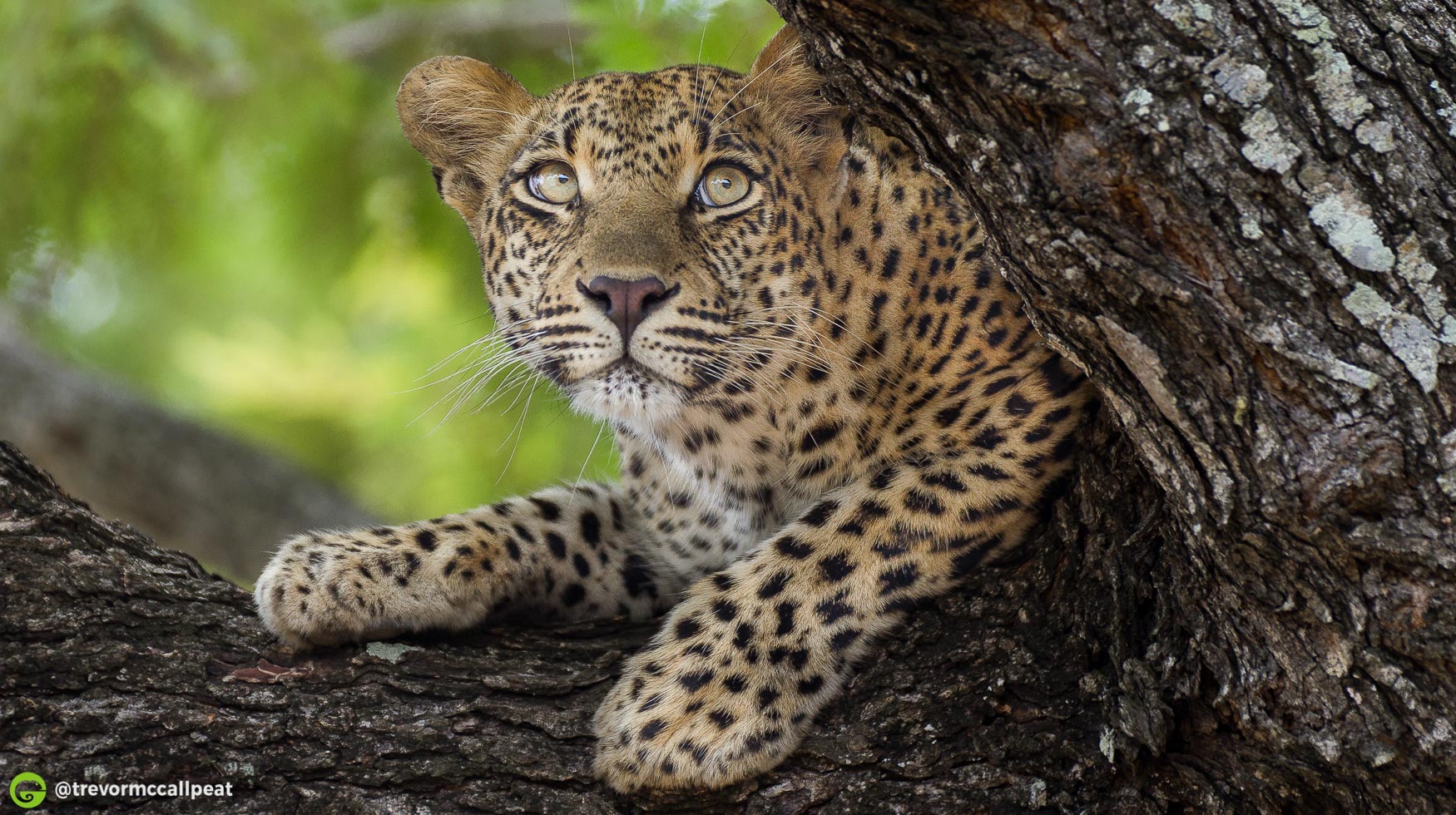
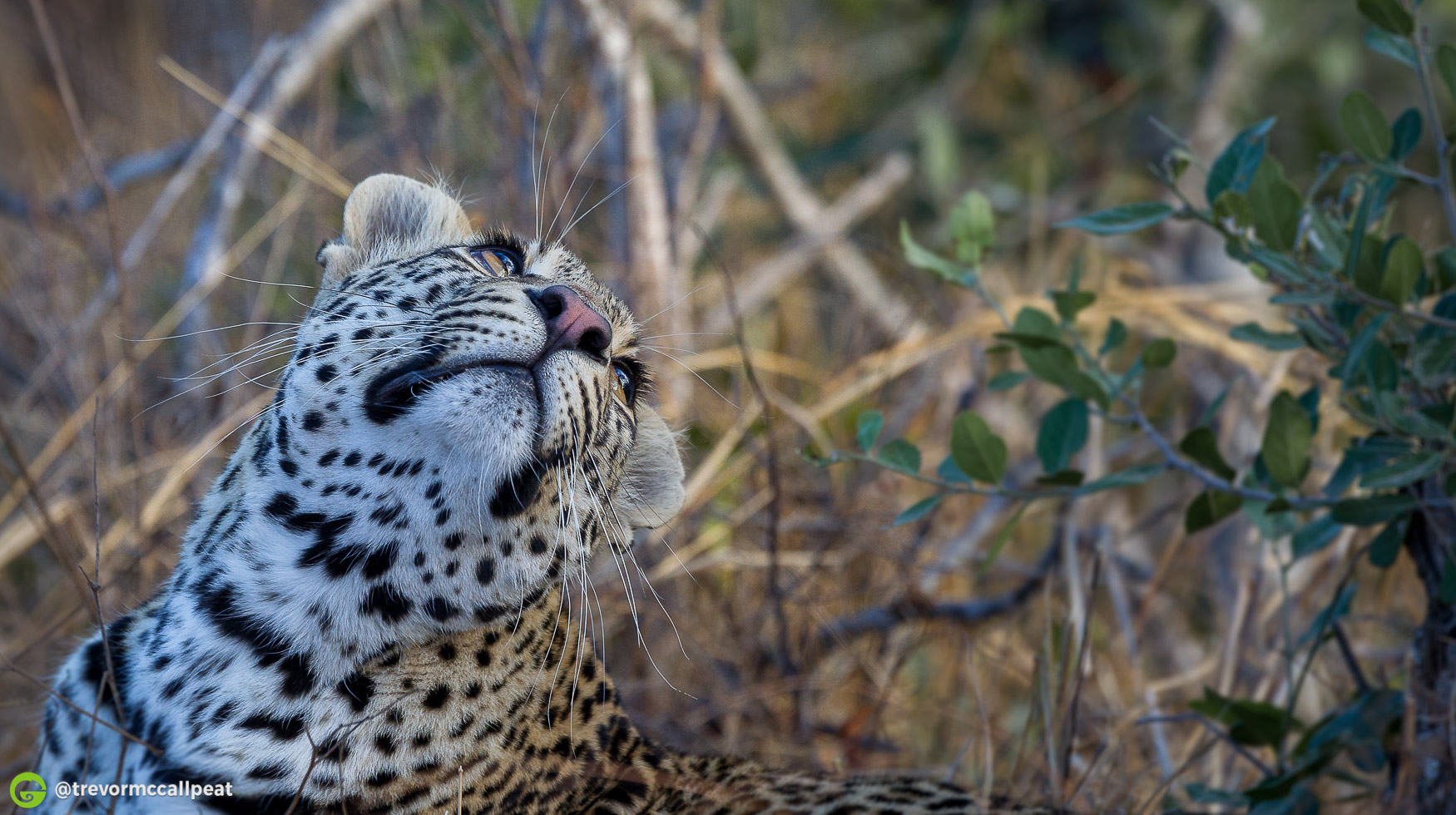
In any textbook you read, it will tell you that leopards are completely solitary animals, except for when females have cubs or are mating with a male. What we don't know and what I learnt while guiding is that they actually do in fact see each other on a fairly regular basis.
A male's territory is roughly 3 - 5 times bigger than female's. The males whole purpose is to have as big of a territory as possible so that he can have as many females as possible so that he can mate with them and spread his genetics. The females have quite a tough job, being solitary, they need to hunt for themselves, mark territory and look after young, which in the wild world is very difficult to do.
A leopardess can have anything between 1 and 3 cubs at a time. Generally, the younger they are the more cubs they can have in a litter. Having said that, it is not a fact. It is very difficult to determine a survival rate in leopard cubs as this is a factor that can vary considerably. Leopards prefer to reside in thick areas, drainage lines and rocky outcrops. This is where they will den with their cubs to try and keep them safe. There are many animals that will kill leopard cubs such as, hyena, other leopards, lions, wild dogs, baboons, snakes, crocodiles, elephants, buffalo and many more. The reason for this is to either eliminate competition or to eliminate future threats.
Female leopards can leave the den site for up to 2 days! The reason for this is that they still need to be active in patrolling territory and they need to find food, they need to stay as fit and healthy as possible to give their cubs the best chance of survival. Talking about cubs, a leopards gestation period is just over 3 months. It is only in the last 6 days or so that you will see she is pregnant. The cubs develop and grow fairly high up under the chest cavity for protection and drop down roughly a week before being born. This protect the cubs while the leopardess hunts and prevents any injury to the cubs.
When mating, a leopardess will leave her scent everywhere she goes so that the male can find her. Once he finds her she will follow him everywhere he goes, more often than not leaving the safety of her own territory. Mating lasts 4 - 5 days.
When I was guiding in the Sabi Sands, we had a female leopard whose territory overlapped with 3 different males. This makes it incredibly tough for her and over a 14 day period, she met up with all 3 males and mated with them. This was incredibly clever of her. The reason for this was to ensure the safety of her cubs. By mating with all the males, when she had her cubs all the males thought they were the father.
The cubs are kept in a very densely vegetated areas for protection. They will be taken to kills by their mothers from about 10 - 12 weeks of ages and introduced to meat. This is also a very stressful time for the leopardess, having cubs at a kill makes them extremely vulnerable to other predators that might come across the food.
I have seen on multiple occasions, the father of the cubs at the kill with the leopardess and cubs. It is easier for a male leopard to steal food from a much smaller female than it is to hunt for themselves. The cubs don't really interact with the males, but he does tolerate them which is massive for animals that are so called strictly nocturnal.
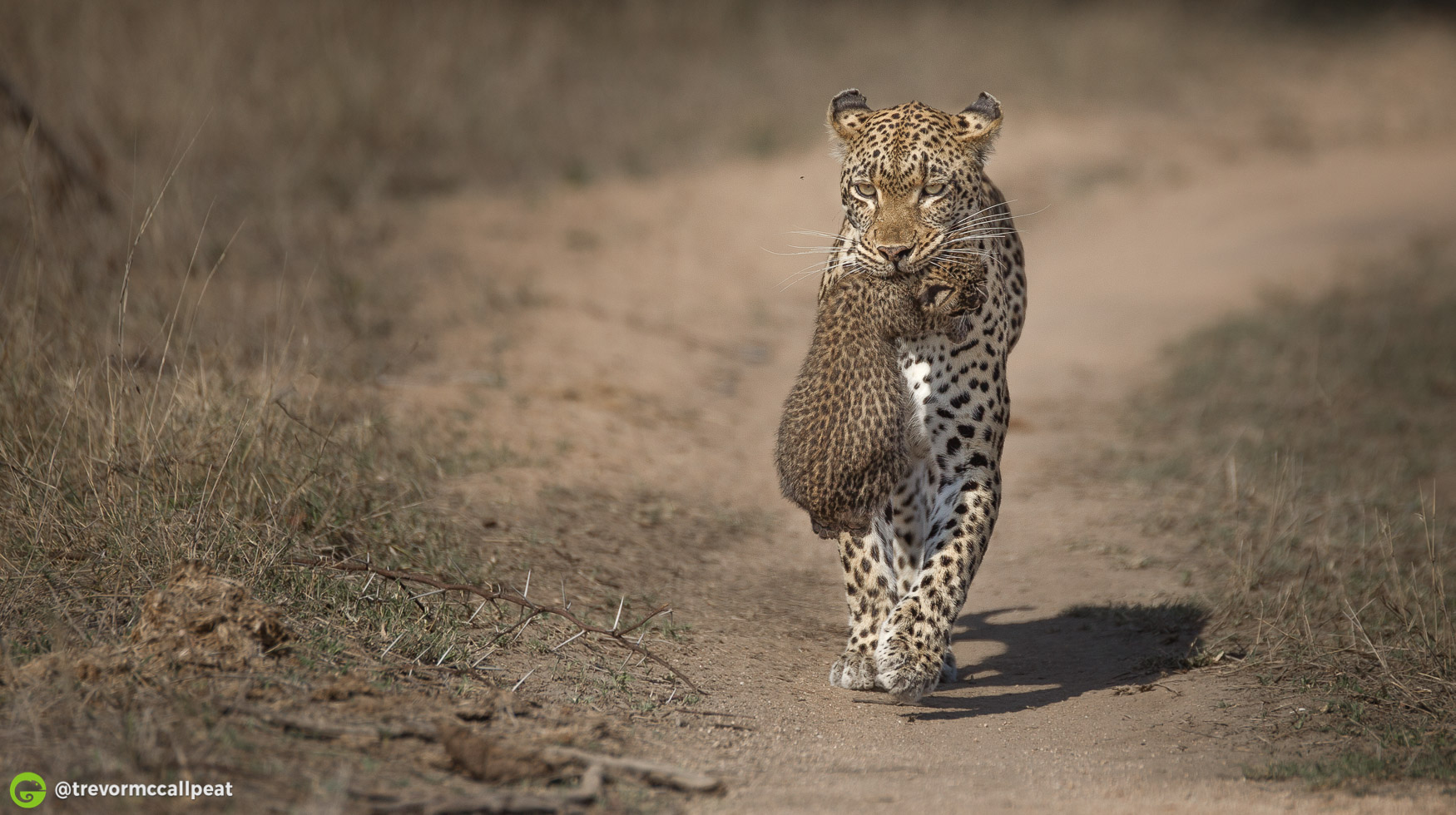
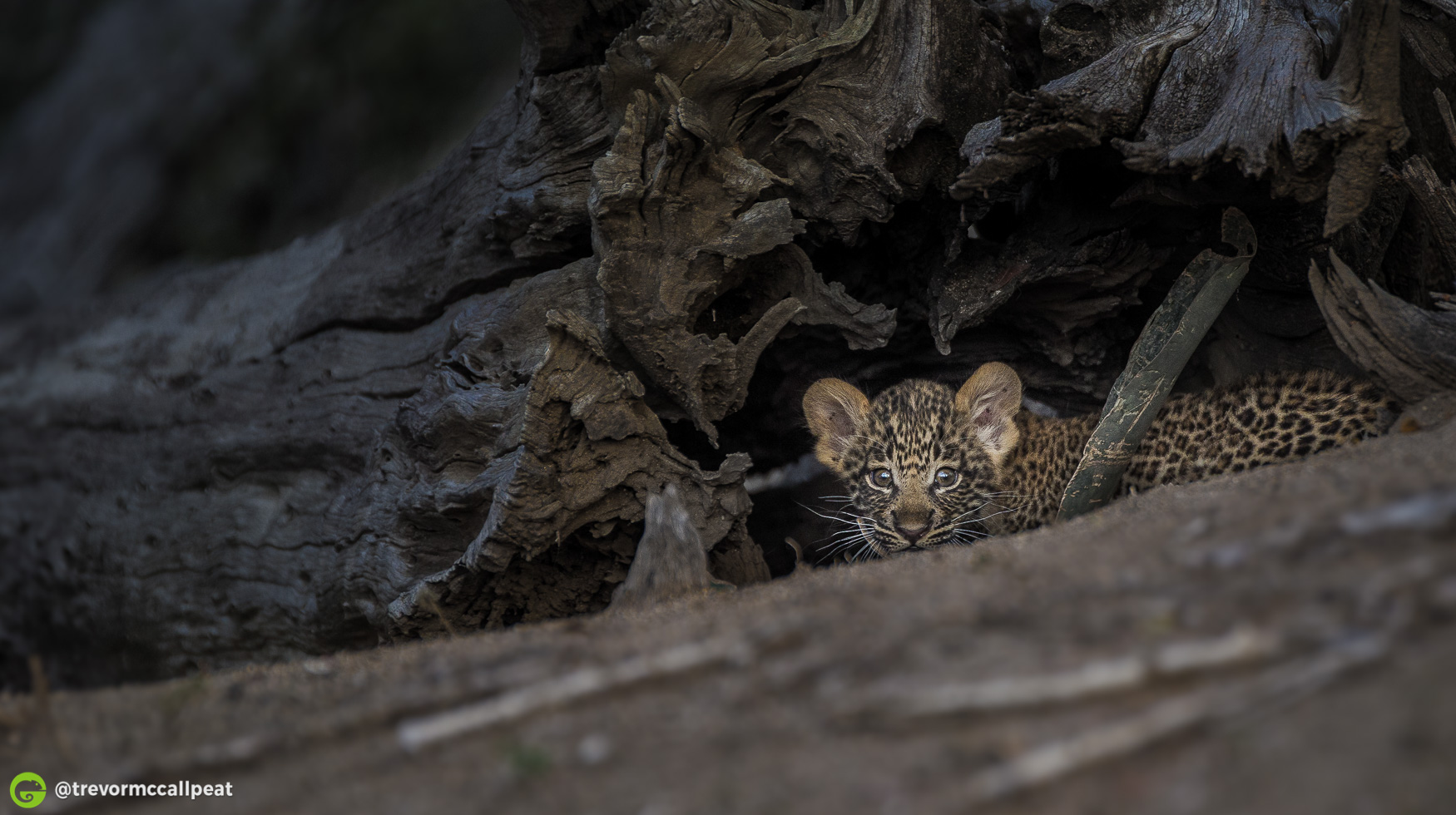
As I mentioned, cubs can be left at the den site for long periods at a time and unlike other predators, leopards are self taught hunters. As they start to get older, they become more inquisitive with the wild world and start exploring while gaining confidence.
Being solitary animals, leopards will prey on a wide variety of creatures, from mice and squirrels all the way up to young buffalo. This means that it is not essential for them to make large kills on a regular basis. From my experience I have seen young leopards surviving for months on small prey items. Being able to successfully catch small prey also minimises risk for these solitary cats, you can imagine if a leopard gets a serious injury, it could very well be the end of them. They have to be extremely careful in the hunts they want to pursue and the hunts they should abandon.
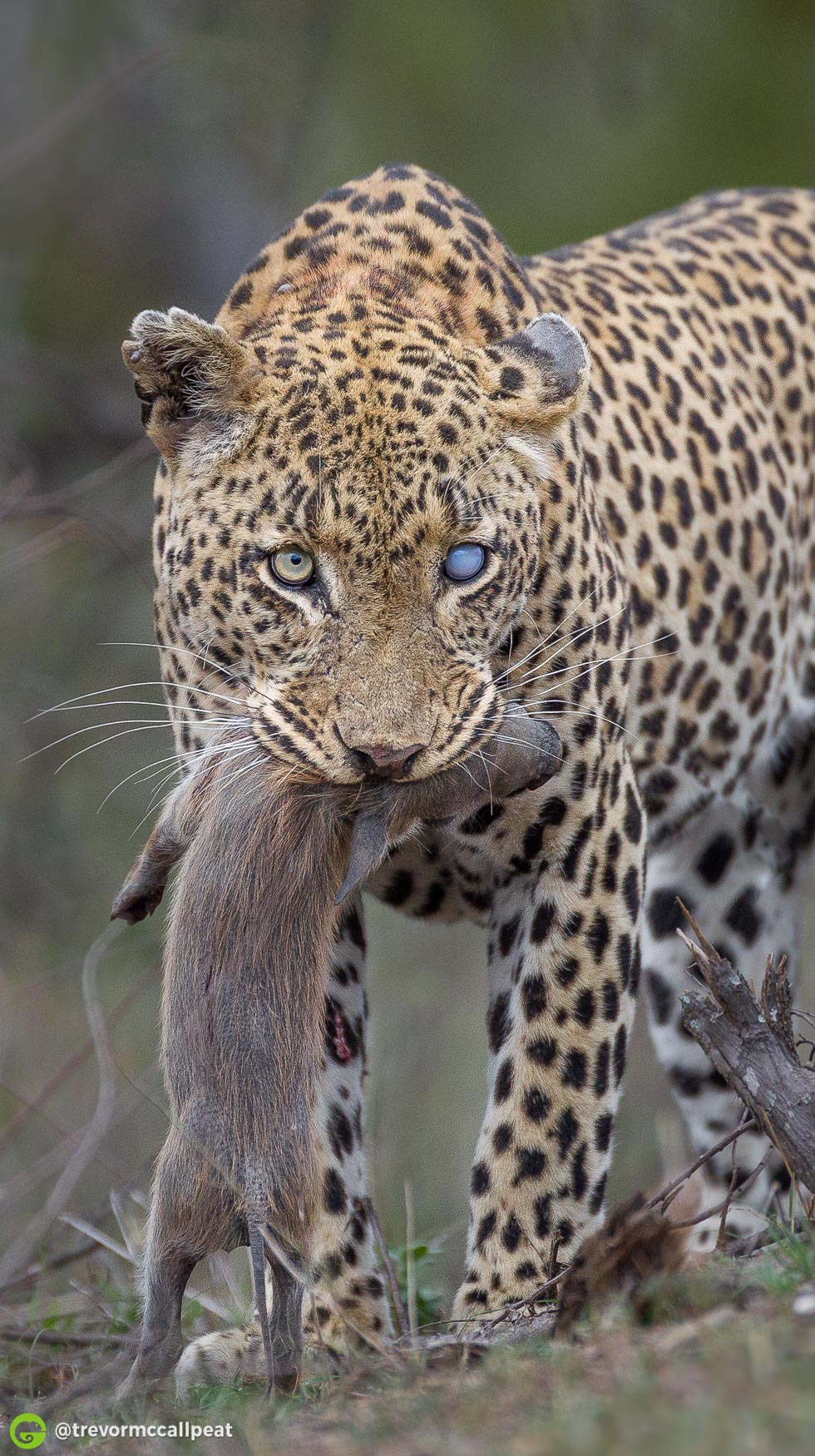
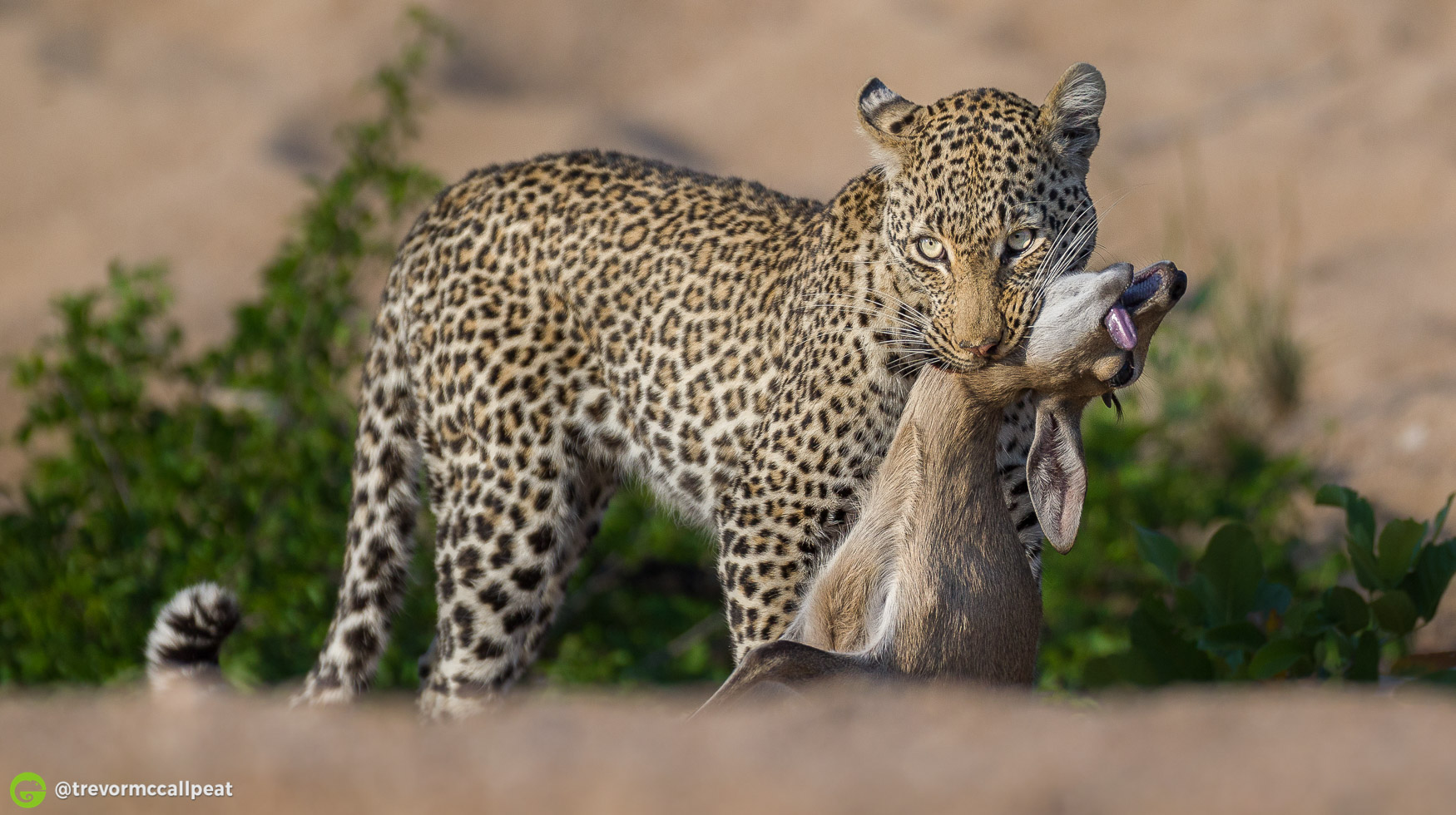
Female cubs tend to stay with their mother until about 14 - 16 months of age, sometimes a little later than that before mom starts to push them away. It sounds like a cruel world, but the leopardess will often give the young female a small portion of her territory as a starting point, a safe place for the youngster to be introduced into the big wild world. As the youngster starts to get older, bigger and more confident, she will start to expand her territory by putting pressure on the other females in the area. A territory isn't something that they set up and then constantly patrol. A territory is something will continue to shift slowly as they get bigger and older. Due to the pressures around them, their territories constantly change. It also depends what the females around them are doing, for example if one passes away, they may try claim a portion of the territory to increase their own territory.
The males often stay with their mother for a little longer. They have been know to stay close to mom for up to 2 years. For the males, life after mom becomes very tough. They are too small to set up a territory and often get chased far away from their mother and fathers territories. The males have to then keep a low profile to avoid other predators and especially other male leopards.
When a male leaves, he leaves at about two years and only really comes into his prime from about 4 -6 years of age, this is when they start to look extremely good. They develop a massive neck and dewlap. Typically this is when you see them looking to set up shop. They will scope areas out, get an understanding of current dominant male leopards in the area. This is done through picking up scent and also potentially having encounters with them.
Being solitary animals, it's not that often you will see leopards fighting. In my 14 years of experience, I have seen this twice. You can imagine two big male leopards fighting can be a serious affair and getting injured could mean the end of them. It is only when neither animal intends on backing down after growling and using body size to try and intimidate the other doesn't work that they will come to blows.
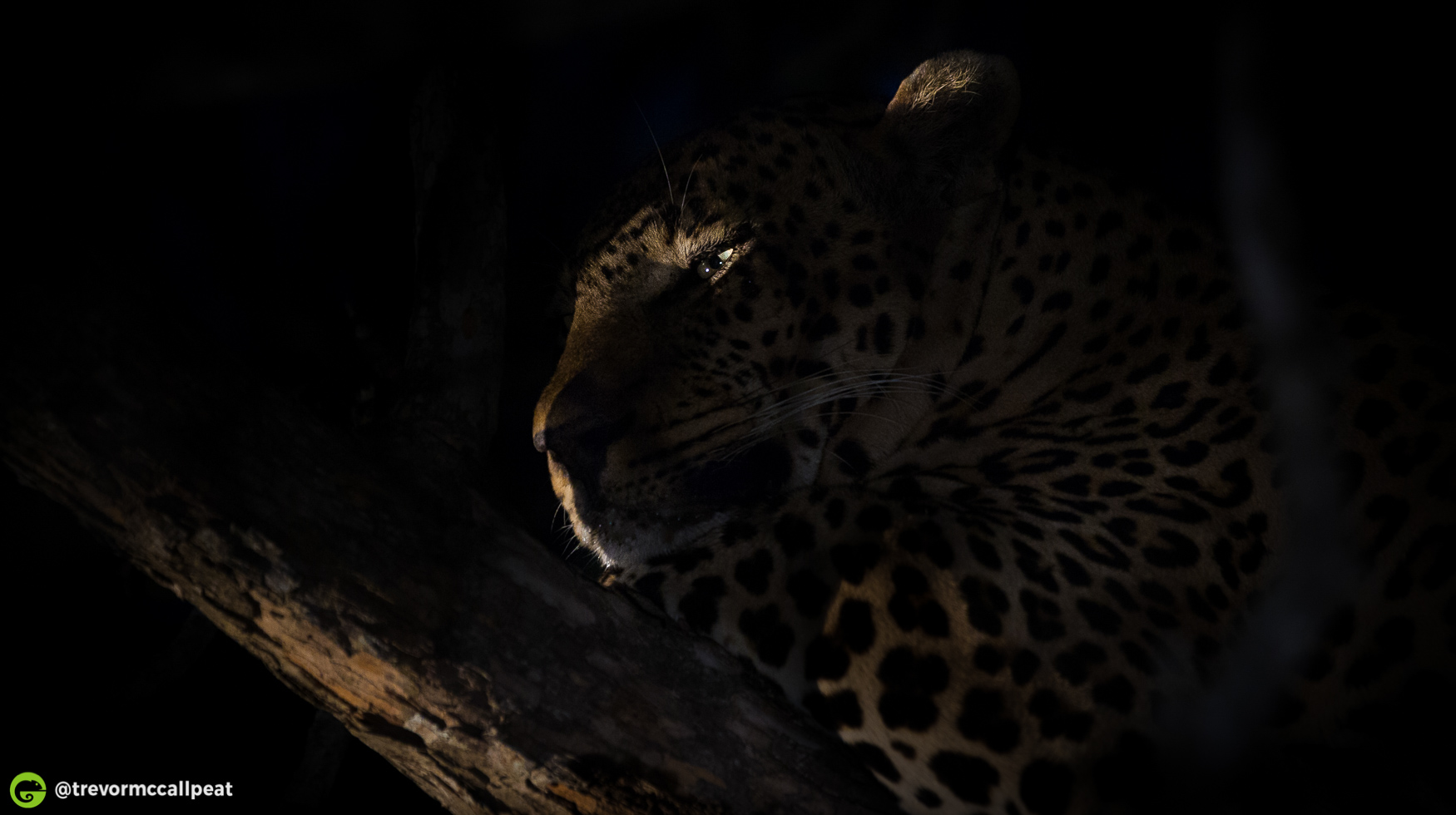
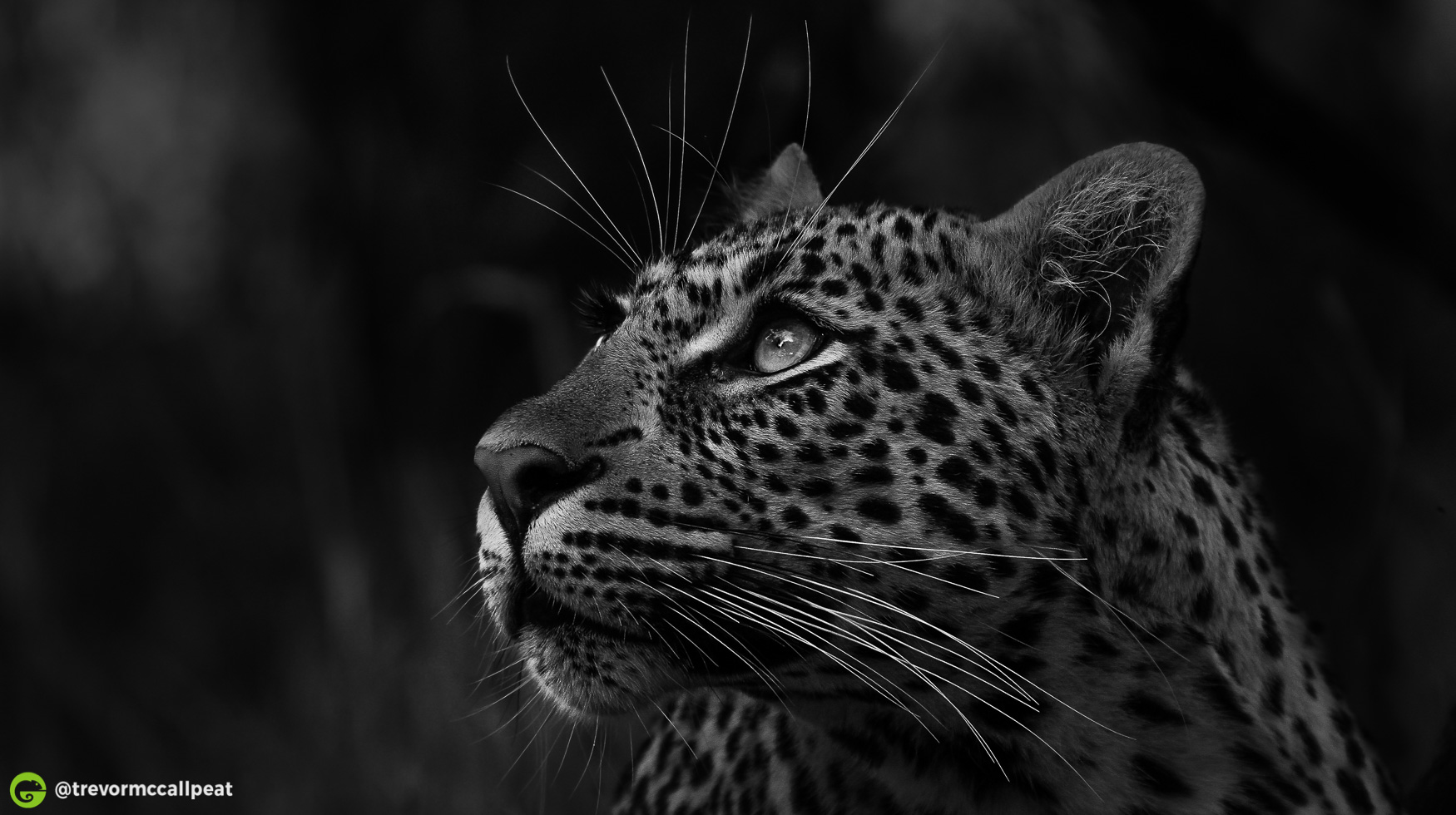
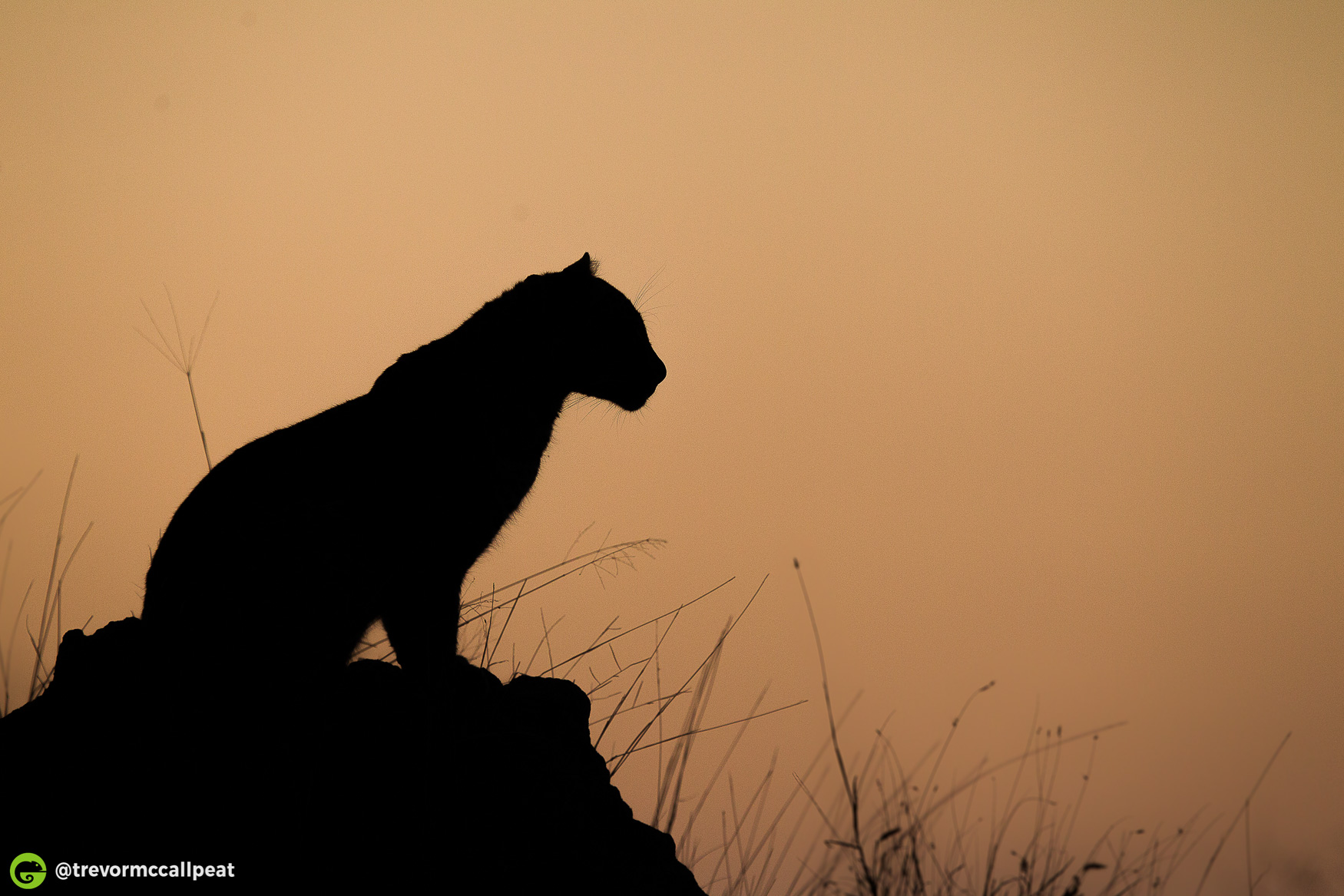
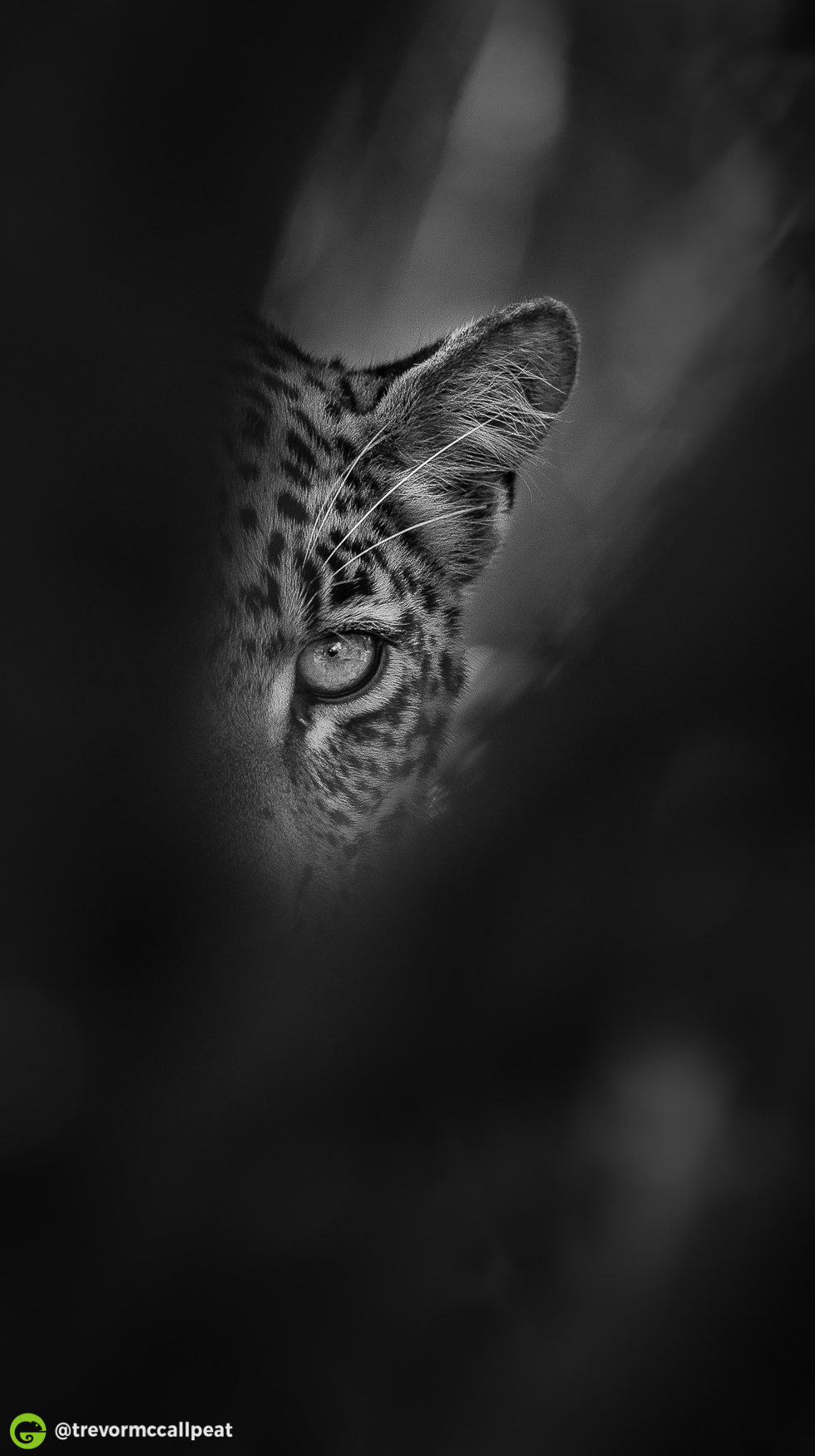
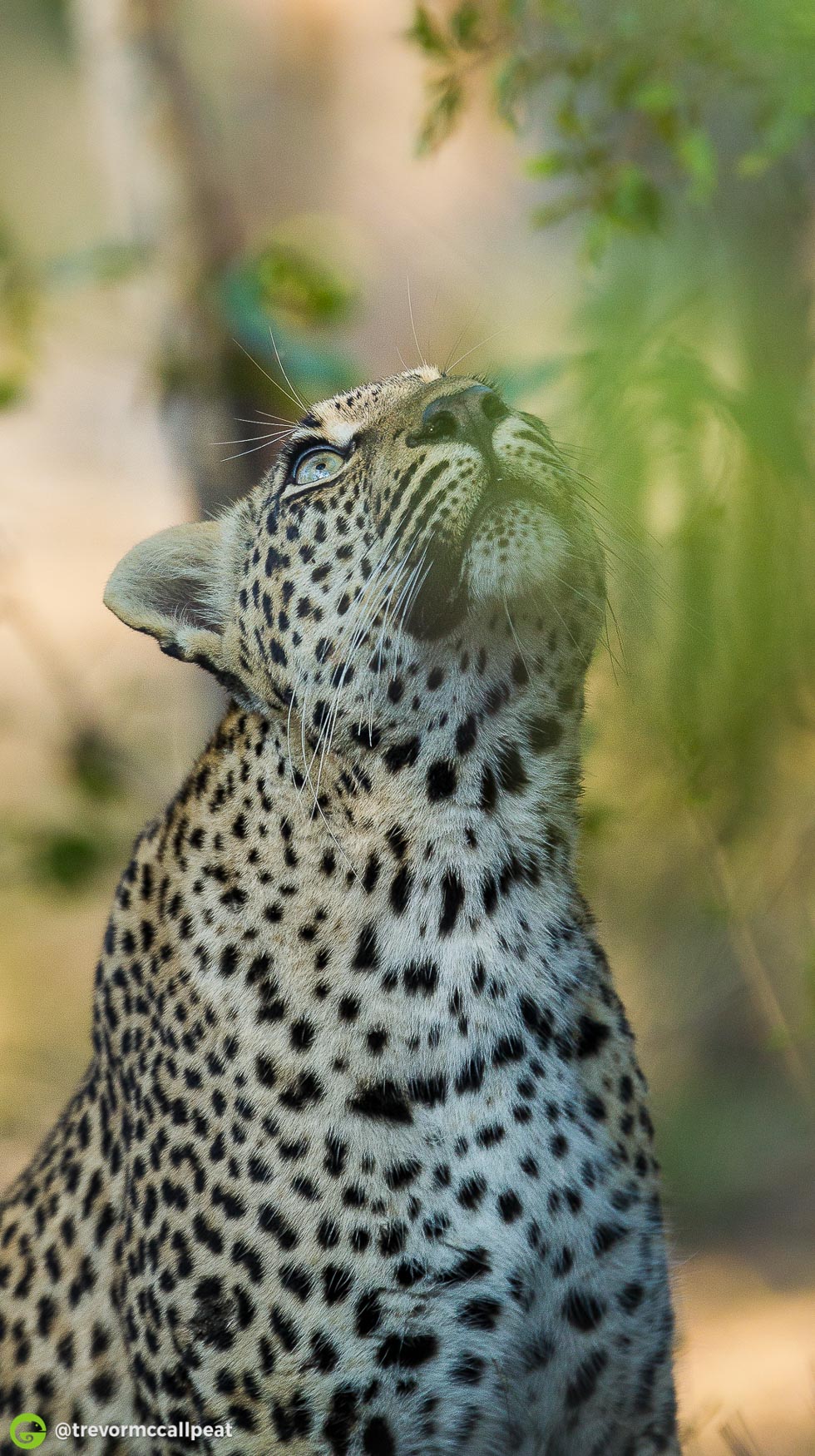
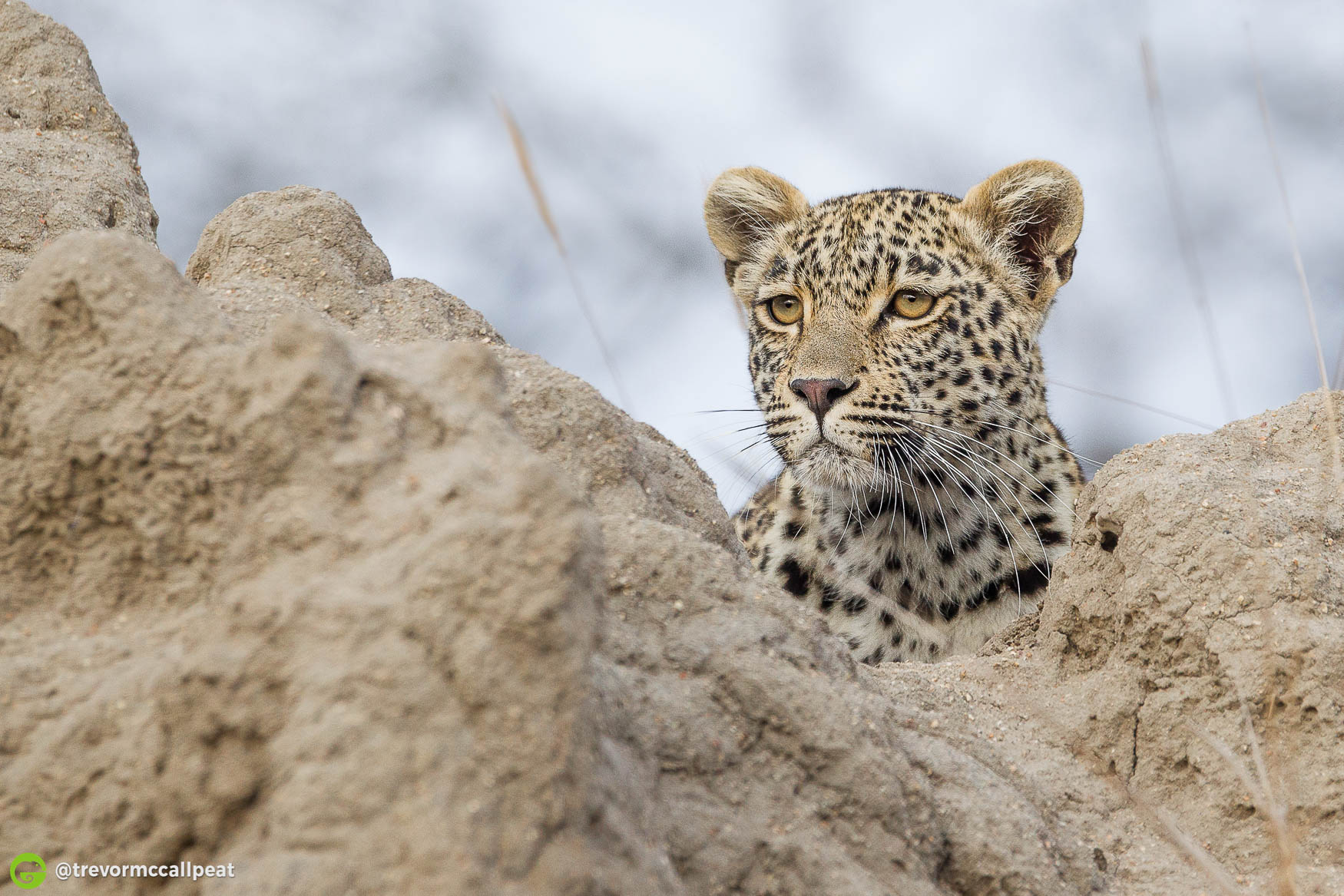
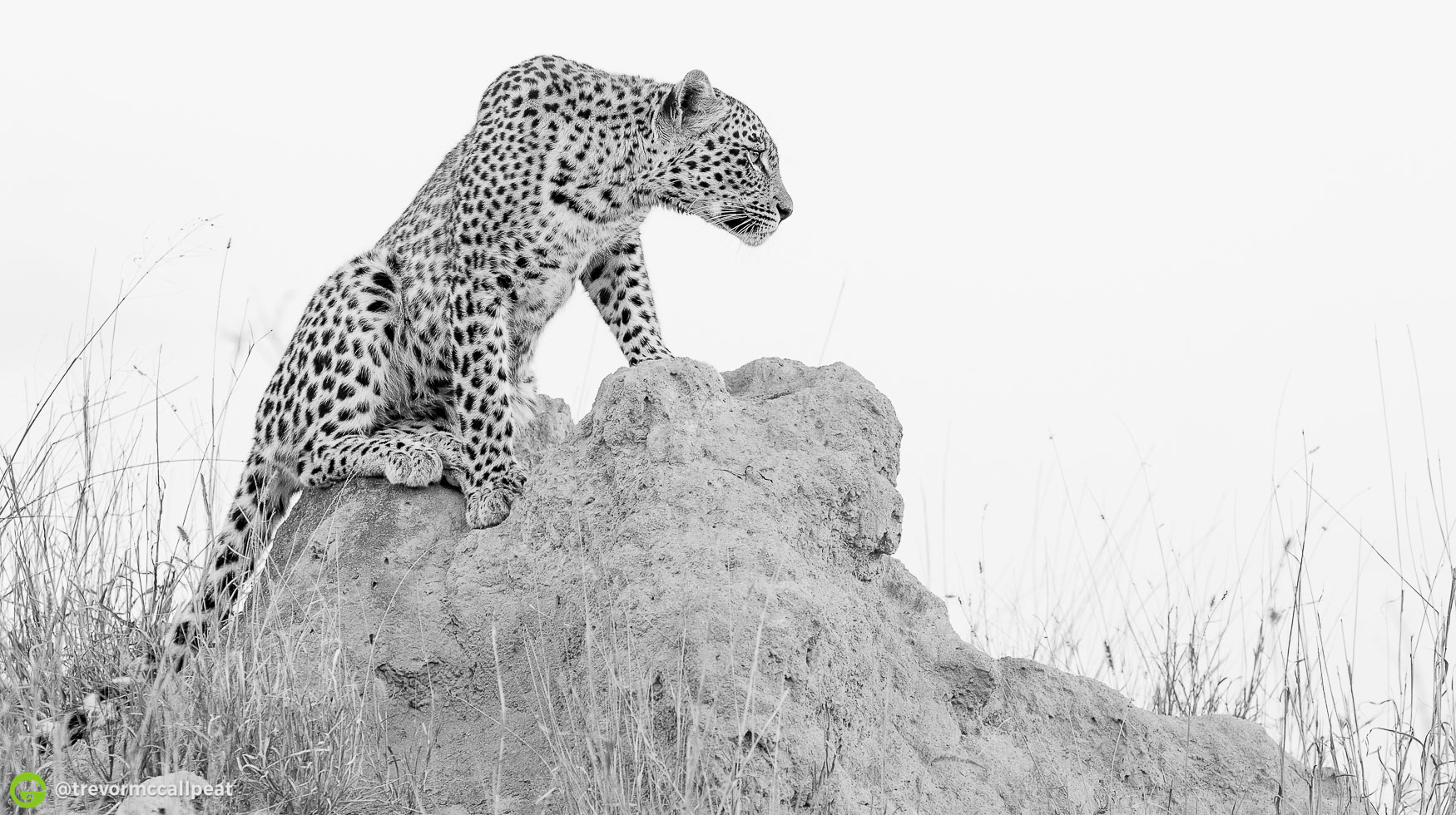
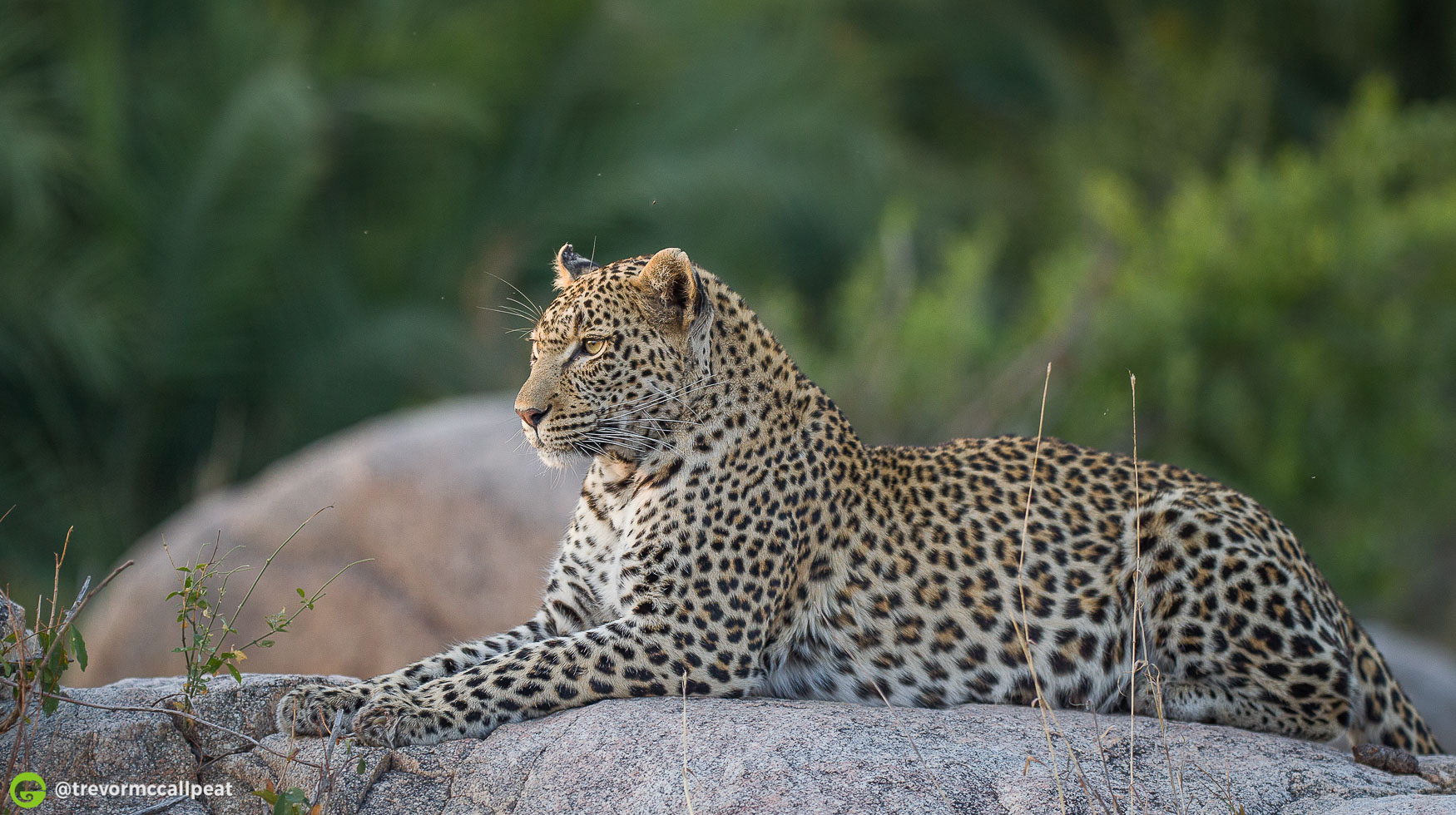
I really hope that this blog gives you all a little more depth into what an unique and special life these animals lead. They truly are special animals and I am glad I get to share all this information with all of you.
Thank you for taking the time to read this blog, I really appreciate it.
Until next time,
Trevor
Sabi Sabi Wildlife Photography Seminar
This ever popular wildlife photography seminar is designed for anyone who loves wildlife, safari and photography. Over the duration of the seminar, the aim is to cover all facets of wildlife photography to establish a deeper connection not only with your photographic ability but with wildlife and nature as a whole. The seminar has been created in such a way, that each individual will receive equal personal attention throughout the safari by having three Wild Eye Guides on site for the safari, allowing for ample opportunity to learn from and be inspired by the experts.
Best Of South Luangwa
Follow predators on the hunt well into the night, watch elephants cross back & forth through the lazy Luangwa River and find yourself amongst the densest leopard population in Africa. This is a safari experience that promises jaw-dropping moments from start to finish.
South Luangwa is synonymous with incredible wildlife, beautiful meandering rivers and breathtaking scenery. Many ox-bow lakes remind us of where the river once flowed. Now they fill up annually & provide water for the park’s animals throughout the year.

Thanks for this Trev! Thoroughly enjoyed. Please keep showing off with those wonderful leopard pics of yours!
You are very welcome. Im glad you enjoyed the blog and my personal experience with these special cats.
Thanks for this Trev! Thoroughly enjoyed. Please keep showing off with those wonderful leopard pics of yours!
You are very welcome. Im glad you enjoyed the blog and my personal experience with these special cats.
Thank you Trev for sharing these incredible images! This blog perfectly complements your safari stories where you beautifully narrate the leopard encounters on foot when tracking 🙂
Thank you so much, that means a lot to me and I am glad you enjoyed reading it. Leopards are truly special animals and I cannot wait to get another opportunity to spend time with them out in the wild.
Thank you Trev for sharing these incredible images! This blog perfectly complements your safari stories where you beautifully narrate the leopard encounters on foot when tracking 🙂
Thank you so much, that means a lot to me and I am glad you enjoyed reading it. Leopards are truly special animals and I cannot wait to get another opportunity to spend time with them out in the wild.
Trev, these leopard pictures were absolutely breathtaking. I was so enthusiastic to learn about these beautiful creatures. Please post more.
Hi Rondala,
Im glad you liked it. Leopards are my favourite animals and I can never get enough of them. It is always special spending time with these amazing cats.